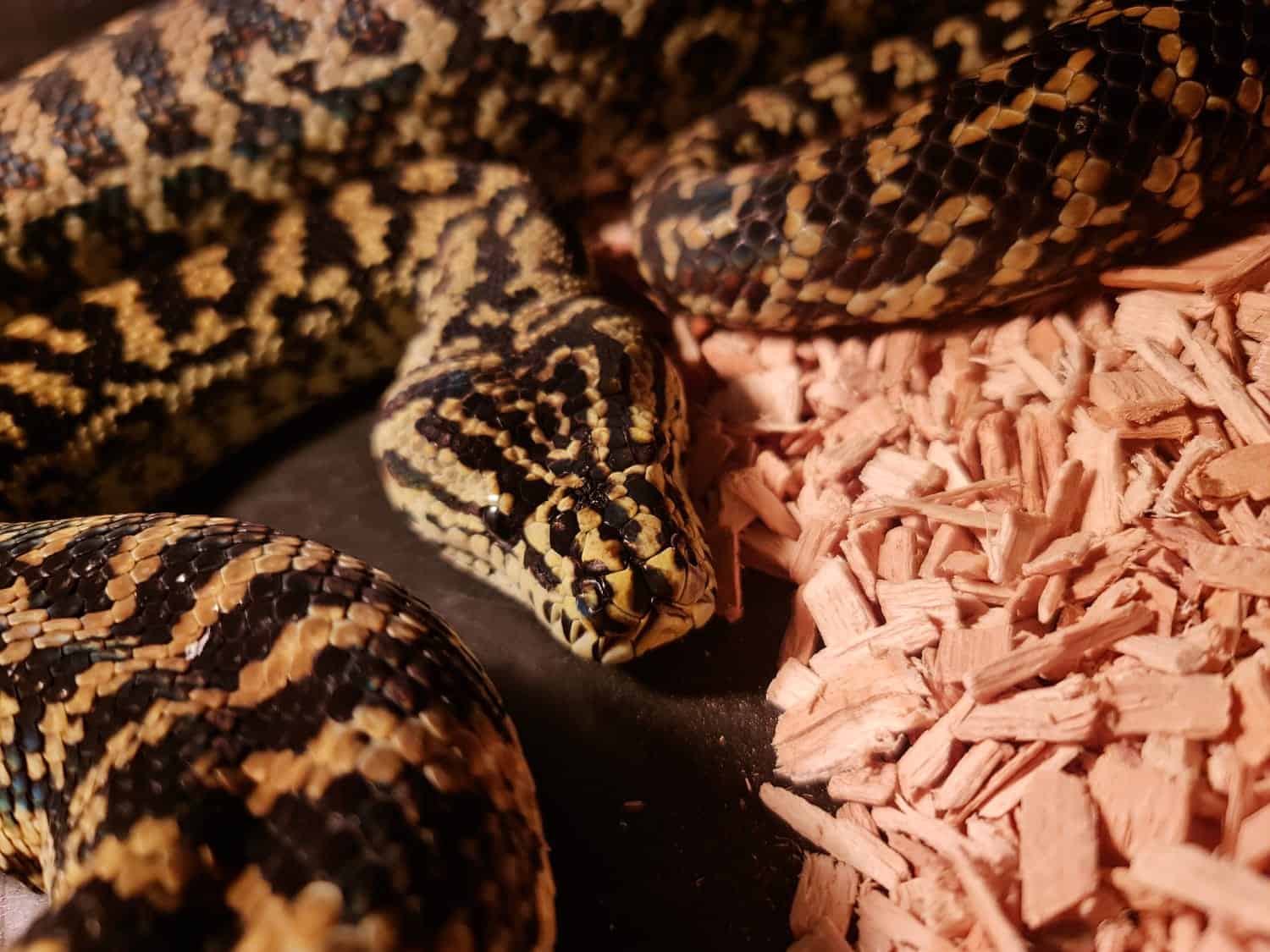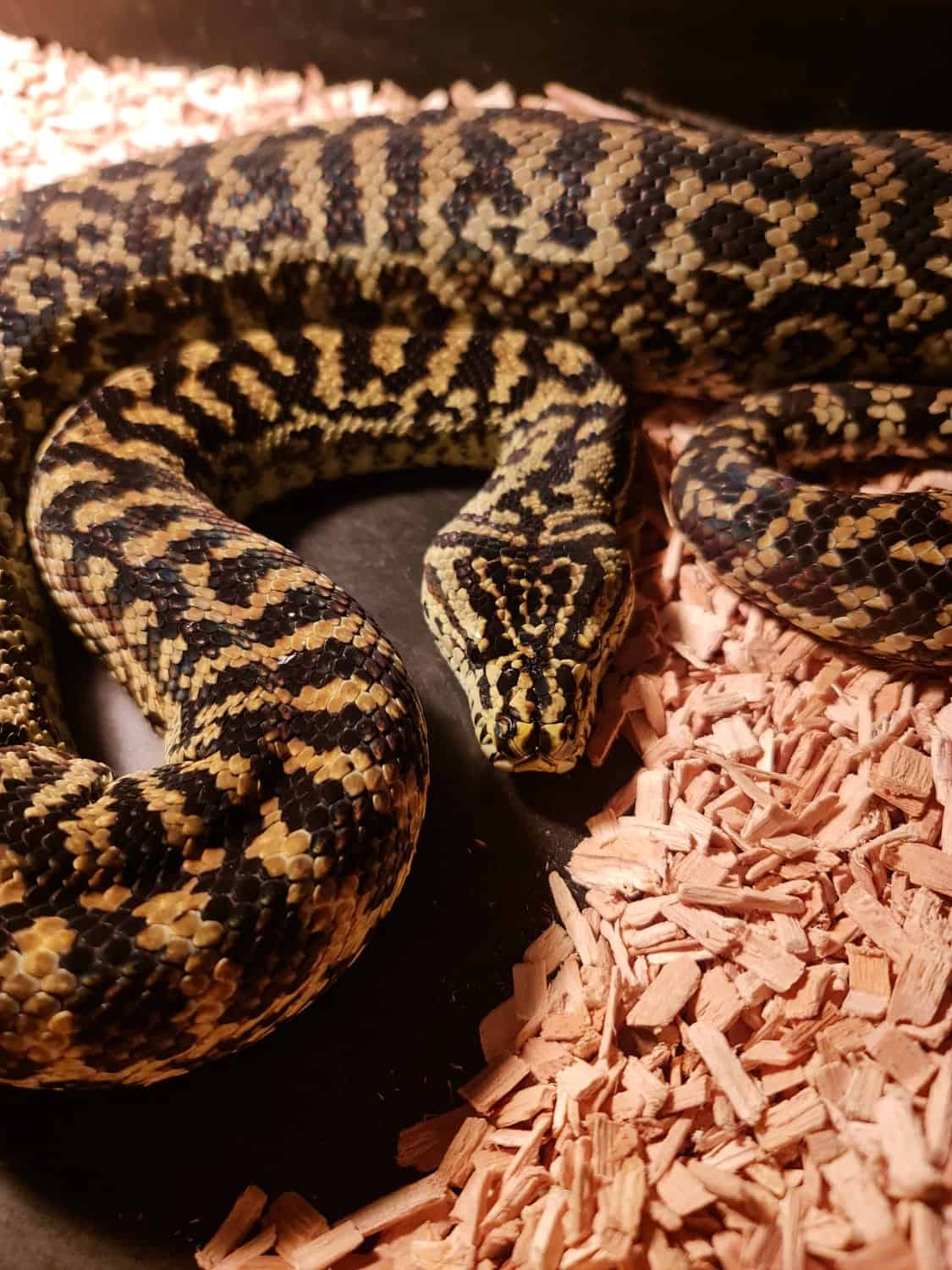Species: Carpet Python
Carpet python
This snake is part of the Pythonidae’s family. He is black and yellow, and his body is marked by stripes. Adults can reach 1m70 to 2m20. This animal is found in the north-east of Australia in the Queensland region, in tropical forests. It is a species that lives on the ground or in trees, but rather tends to climb.
Captivity’s conditions:
It is a snake quite easy to breed, juveniles can be a bit biting but they calm down with age. A terrarium of 150x60x70 can be good for an adult specimen, and he needs branches because he tends to put himself often on its branch. He will also like to be able to hide, with hiding places or branches.
Temperatures range must be from 27 to 32 at the hot spot. At night, you can go down to 28 at the hot spot and 25 at the cold spot. As for the hygrometry, a water tank is enough.
Feeding:
They are not hard to feed, rodents are great in captivity. He is a nocturnal or diurnal hunter according to the opportunities available to him in nature, and eat lizards, frogs, birds and rodents in their natural environment.
Breeding:
Sexual maturity will be around 4 years for females, 3 for males. Between October to December and late December to February, our Spilotas can be hibernated and the terrarium temperature gradually lowered to 23 C°, which is beneficial to them: it is a “hibernal rest”. However, this “hibernation” is not always necessary to make them reproduce, as for most species in captivity. We can also concentrate mainly on the male, and leave the female warm, this allows to give rest to the male and continue to feed the female. This operation is delicate. Care must always be taken to feed the animals sufciently before and after the rest period when breeding a species is desired. The female lays between 10 and 30 eggs, 70 days after mating, and lays about 26 days after the pre-laying shed. Then, you have to incubate eggs approximately 60 days at 30-31 degrees.



